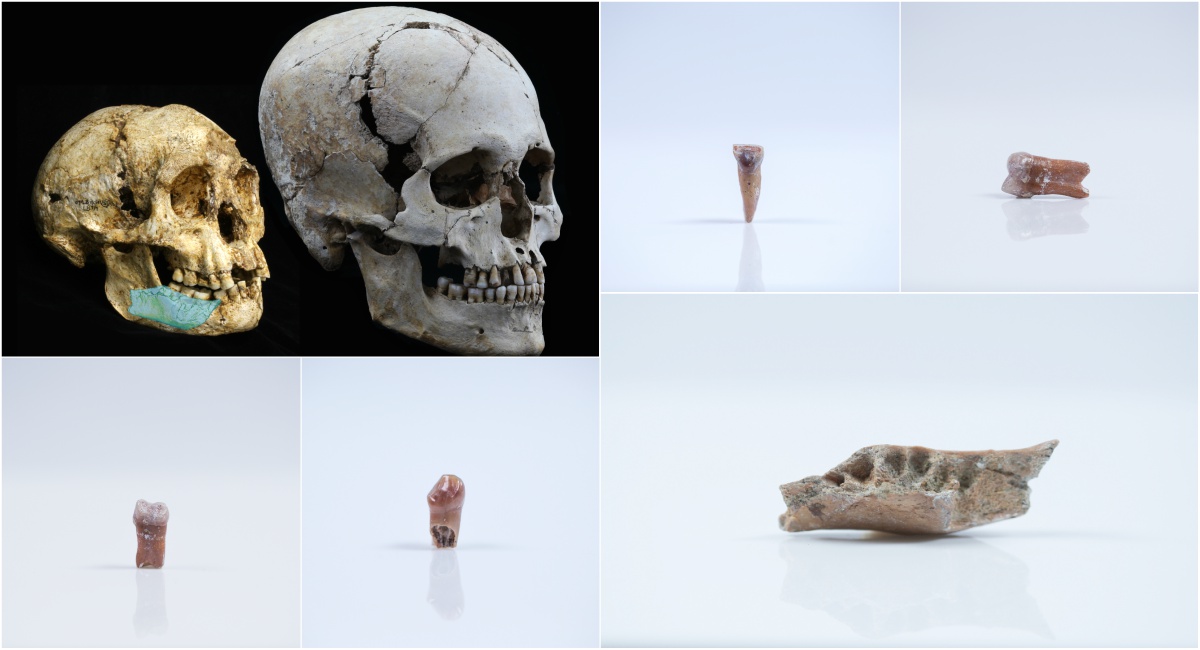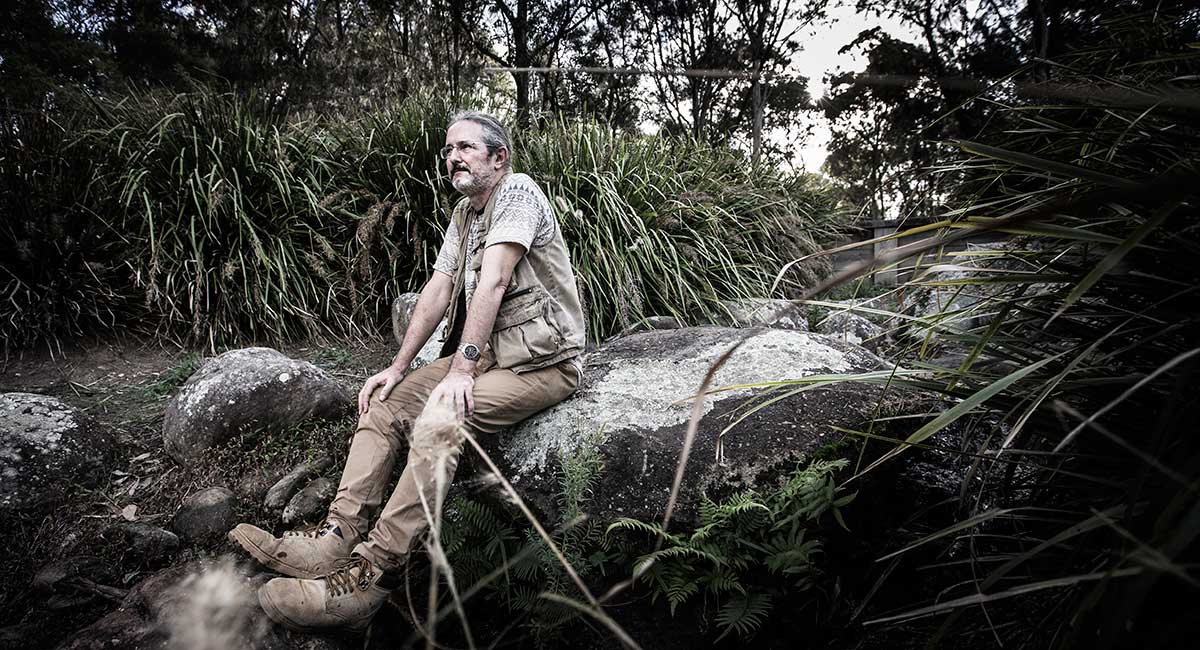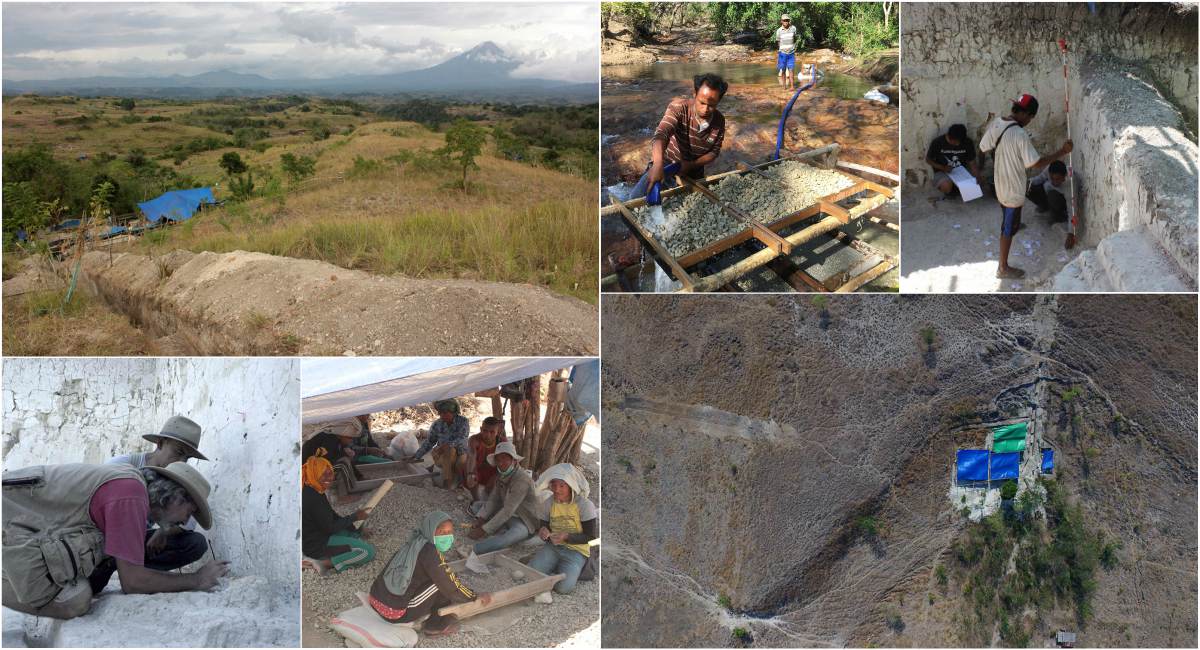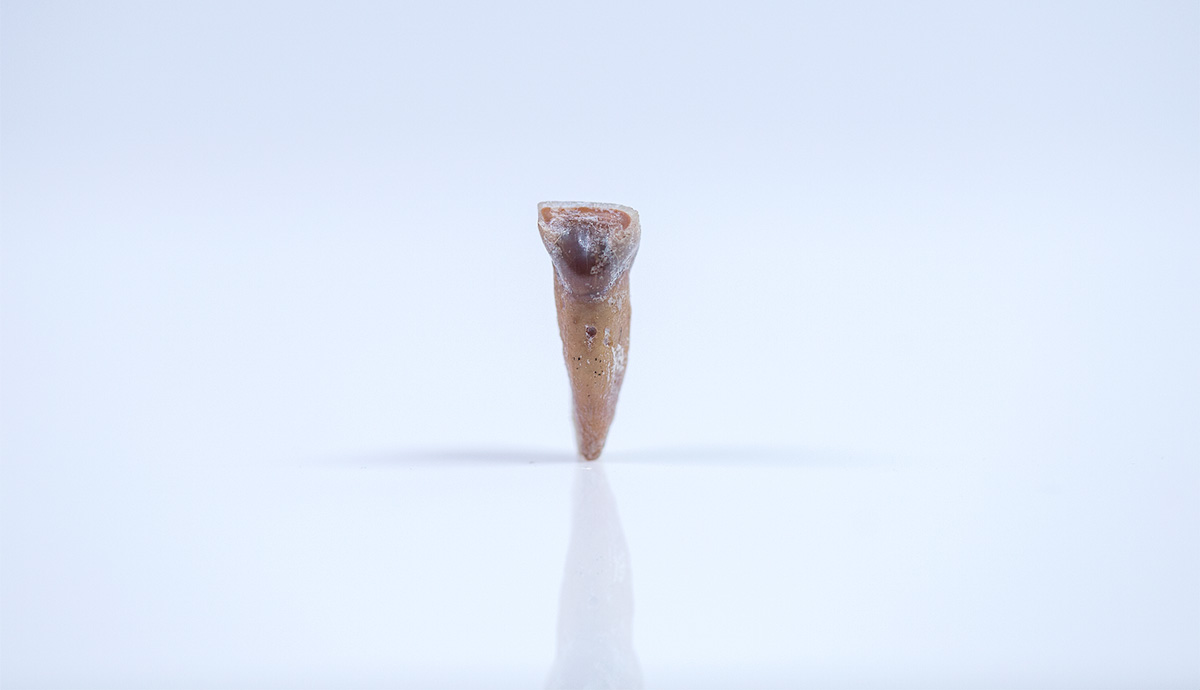June 9, 2016
Remarkable new finds are clues to ‘hobbit’ ancestry
International team of researchers find 700,000-year-old hobbit remains.
In a remarkable new discovery, an international team of researchers has uncovered the fossilised remains of ancient hominins in Indonesia, which appear to be the ancestors of Homo floresiensis, the tiny species of human, affectionately dubbed the ‘Hobbit’, that stood at just one metre tall.
Dr Gert van den Bergh, from the University of Wollongong’s (UOW) Centre for Archaeological Science, led the team that excavated a lower right jaw fragment and six teeth from at least one adult and two children from layers of sedimentary rock at a site named Mata Menge on the Indonesian island of Flores.
The findings, published in two separate papers today (Thursday 9 June) in the prestigious journal Nature, detail the anatomical study of these remains and shows that the finds pre-date Homo floresiensis at Liang Bua by more than half a million years.
“Remarkably, these fossils, which include two milk teeth from children, are at least 700,000 year old,” Dr van den Bergh said.

“This find has important implications for our understanding of early human dispersal and evolution in the region and quashes once and for all any doubters that believe Homo floresiensis was merely a sick modern human (Homo sapiens).”
Dr Yousuke Kaifu, from Tokyo’s National Museum of Nature and Science, compared the fossils with a large dataset of modern and fossil hominins to identify them.
“All the fossils are indisputably hominin and they appear to be remarkably similar to those of Homo floresiensis,” he said.
“The morphology of the fossil teeth also suggests that this human lineage represents a dwarfed descendant of early Homo erectus that somehow got marooned on the island of Flores”.
“What is truly unexpected is that the size of the finds indicates that Homo floresiensis had already obtained its small size by at least 700,000 years ago.”
Dr van den Bergh said given stone artefacts uncovered from the same region date back to at least one million years ago, this insular human lineage had been present on the Island of Flores at least 300,000 years earlier.
“It is conceivable that the tiny Homo floresiensis evolved its miniature body proportions during the initial 300,000 years on Flores, and is thus a dwarfed side lineage that ultimately derives from Homo erectus.
“It is also possible that this lineage pre-dates the first hominin arrival on Flores, implying speciation occurred on a stepping-stone island between Asia and Flores, such as Sulawesi.”
In January 2016 a team led by Dr van den Bergh published –also in Nature– the occurrence of stone tools on Sulawesi that predate the arrival of modern humans on that island, and it is conceivable that these stone tools were made by another isolated hominin lineage that produced the offshoot that founded the lineage on Flores.
Unearthed during the final weeks of the 2014 excavation season, the Mata Menge fossils were found by UOW PhD student Mika Puspaningrum in an ancient riverbed, situated within the So’a Basin of Flores, a region that Dr van den Bergh has been excavating for more than 20 years.

Rather than luck, this discovery was the result of a systematic excavation strategy. A sedimentologist as well as experienced palaeontologist, Dr van den Bergh worked with Professor Mike Morwood (leader of the Australian-Indonesian team that discovered the original hobbit skeleton in 2003) to conduct a series of test excavations to identify which stratigraphic layer was most likely to yield hominin results.
After three years of excavations carried out in collaboration with colleagues from the Geological Agency of Indonesia, the team had accumulated thousands of fossils of now extinct fauna and stone artefacts from a 800,000 year old fossil-rich layer. In 2013 the team decided to target a layer 10metres higher up in the sequence.
The hominin fossils were found in the following field season, excavated from a river-laid sandstone covered, sealed and preserved by an ancient volcanic mudflow.
“My only regret is that Mike passed away in 2013 and therefore did not live to share the experience and the excitement of these new hominin fossils. We both knew they must be there,” Dr van den Bergh said.
“I think Mike would have quite enjoyed the fact that the field of palaeoanthropology is poised for another major shakeup.”
Dr van den Bergh said the key to fully evaluating the finds now is the recovery of additional, more complete hominin skeletal remains from the proven deposits at Mata Menge, or from older fossil-bearing strata.

The team has already been excavating fossil-bearing layers at a site near Mata Menge that dates back to around one million years, in collaboration with colleagues from the National Centre for Archaeological Research in Jakarta.
By targeting older sites in the So’a Basin the research team hopes to identify the precursor species and test the proposal that the ancestors of Homo floresiensis arrived on Flores in the form of Homo erectus.
Other key members of the team, which is currently seeking support from the Australian Research Council (ARC) to build on, and expand their research, include: F. Aziz, I. Kurniawan, E. Setiyabudi, R. Setiawan and D. Yurnaldi from the Geological Agency of Indonesia; A. Brumm from the Research Centre of Human Evolution (RCHE) at Griffith University, who co-led the excavations, M. Storey from the Natural History Museum of Denmark; B.V. Alloway from Victoria University of Wellington; M.W. Moore of the University of New England; H.J.M. Meijer of the University of Bergen; UOW PhD candidates M. Puspaningrum and T. Sutikna also contributed to the Mata Menge research.
The news follows just months after UOW geochronologists, also from the Centre for Archaeological Science, announced revised dates for the original Homo floresiensis skeleton found at Liang Bua, a limestone cave on Flores in 2003.
The findings, also published in Nature, pushed back the time of disappearance of Homo floresiensis from as recently as 12,000 years ago to about 50,000 years ago, suggesting that they may have lived alongside modern humans in Indonesia, which begs the question – did we have anything to do with their disappearance?
UOW will offer a free four-week online course on the science behind the Hobbit, commencing 18 July.
Nature papers: doi:10.1038/nature17999 and doi:10.1038/nature17663.
